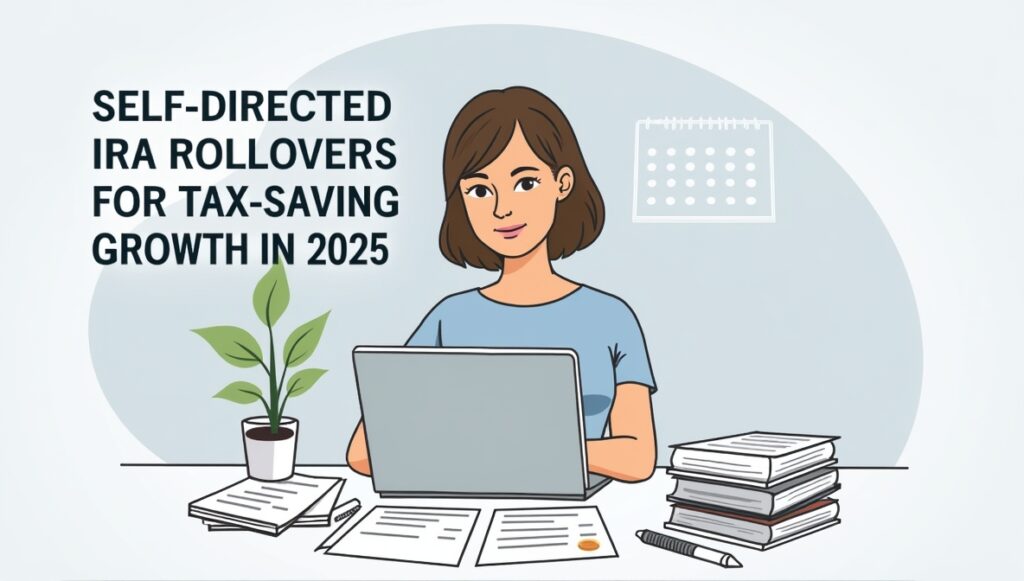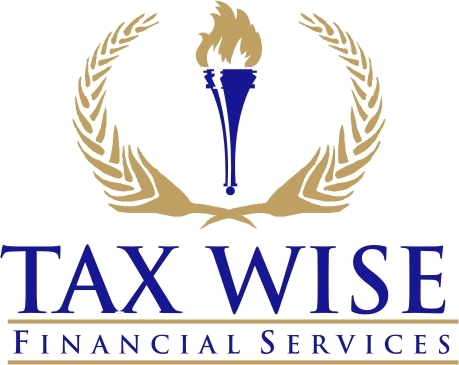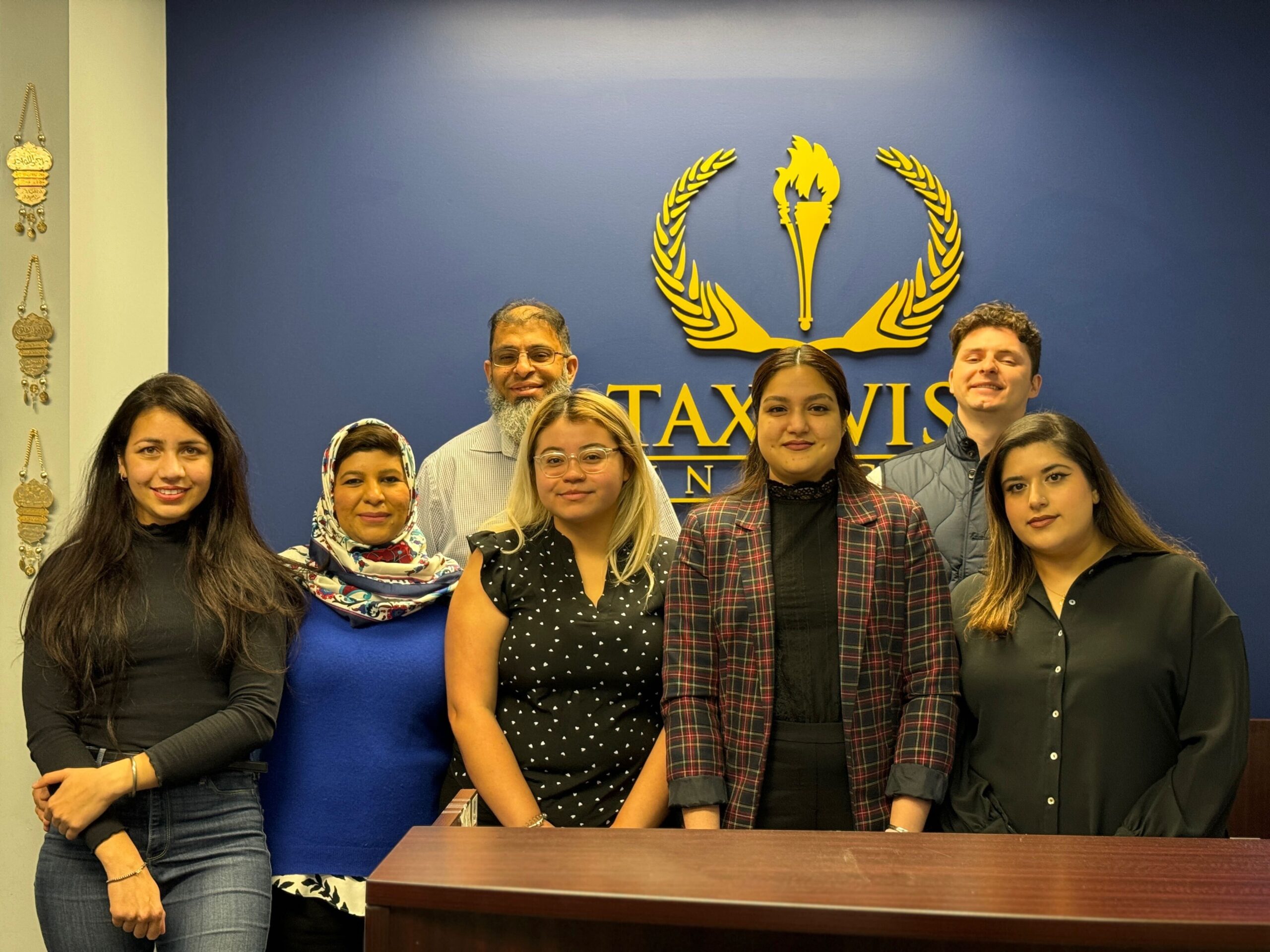
Saving for retirement is one of the most important financial goals for every adult. But not everyone knows that they can grow their savings and reduce taxes at the same time. One of the smartest ways to do this in 2025 is through a Self-Directed IRA Rollover.
In this guide, we’ll explain what it is, how it works, and why Self-Directed IRA Tax Savings can help you take control of your financial future.
What Is a Self-Directed IRA?
A Self-Directed IRA (Individual Retirement Account) is like a traditional IRA, but with more investment freedom. Instead of being limited to stocks and bonds, you can invest in:
- Real estate
- Private businesses
- Precious metals
- Cryptocurrency
This flexibility means you can invest in what you know best. For instance, if you understand real estate, you can buy property using your IRA funds.
💡 Learn more about traditional vs. self-directed IRAs on IRS.gov.
By offering wider investment options, Self-Directed IRA Tax Savings strategies can help diversify your portfolio and boost your returns.
What Is a Rollover and How Does It Work?
A rollover means moving money from one retirement account to another without paying taxes right away. You can roll over funds from a 401(k), Traditional IRA, or other accounts into a Self-Directed IRA.
When you do this correctly, your money keeps its tax advantages. You can transfer funds directly between custodians to avoid penalties or mistakes. This process is called a trustee-to-trustee transfer.
🏦 For detailed steps, check our internal guide on how to roll over your IRA safely.
A Self-Directed IRA rollover gives you both control and flexibility while preserving your tax benefits—making it a key part of Self-Directed IRA Tax Savings.
Why Choose a Self-Directed IRA in 2025?
There are several reasons why more people are choosing this option now than ever before:
- More Investment Options
You’re not stuck with mutual funds. You can choose assets like real estate or private equity that might perform better over time. - Tax Advantages
Like other IRAs, your investments grow tax-deferred or even tax-free (if using a Roth structure). - Diversification
You can balance your portfolio across different industries and asset types. - Control
You make your own choices about what to invest in—no fund manager required.
These benefits make Self-Directed IRA Tax Savings an appealing option for anyone looking to strengthen their retirement plan.
How Do Taxes Work on a Self-Directed IRA?
There are two main types of Self-Directed IRAs, and each affects your taxes differently:
- Traditional Self-Directed IRA:
You contribute pre-tax money. Taxes are due when you withdraw funds in retirement. - Roth Self-Directed IRA:
You pay taxes up front, but future withdrawals (including earnings) are completely tax-free.
By deferring or eliminating taxes on your investment gains, Self-Directed IRA Tax Savings can help your retirement balance grow much faster.
Example of Tax Savings
Imagine you invest in a rental property through your Self-Directed IRA. The rent payments and property appreciation grow inside your IRA, untouched by taxes until you retire.
That’s the power of Self-Directed IRA Tax Savings — your money compounds faster because the government isn’t taking a yearly cut.
Steps to Set Up a Self-Directed IRA Rollover
Setting up your Self-Directed IRA is easier than it sounds. Here’s how:
1. Pick a Custodian
Not every bank or broker can manage a Self-Directed IRA. Choose a custodian approved to handle these accounts. They’ll guide you through the rules and paperwork.
🔍 Compare top custodians in our Self-Directed IRA Custodian Review 2025.
2. Open a Self-Directed IRA Account
Once you have a custodian, open your new IRA account. This is where your rollover funds will be deposited.
3. Transfer or Rollover Your Funds
Ask your old 401(k) or IRA provider to move your funds directly to your new custodian. This avoids taxes and penalties.
4. Select Your Investments
Choose from the many options allowed under IRS rules—like real estate, metals, or private companies. Always do your research.
5. Follow IRS Rules
Certain investments (like collectibles or personal property) are not allowed. Always confirm with your custodian to stay compliant.
Once complete, your Self-Directed IRA Tax Savings plan is ready to start building wealth!
Mistakes to Avoid
Even though this process is simple, many people make avoidable errors:
- Using IRA money for personal use — that’s prohibited.
- Missing the 60-day window if you’re handling a manual rollover.
- Investing in high-risk assets without research.
Avoiding these errors helps your Self-Directed IRA Tax Savings strategy stay strong and compliant.
Who Should Consider This Option?
A Self-Directed IRA Rollover may be ideal for:
- People who want more investment control
- Investors familiar with real estate or private equity
- Anyone seeking tax benefits beyond a traditional IRA
If you want to grow retirement wealth faster and smarter, a Self-Directed IRA Tax Savings plan might be perfect for you.
The Future of Self-Directed IRAs in 2025
More Americans are exploring Self-Directed IRAs as they look for inflation protection and tax relief. In 2025, experts expect even more growth in alternative assets like renewable energy, private lending, and digital currency.
By taking advantage of Self-Directed IRA Tax Savings, you can future-proof your retirement against rising taxes and economic uncertainty.
Final Thoughts
Self-Directed IRA Tax Savings give you the tools to grow your money while keeping taxes low. By moving your old IRA or 401(k) funds into a flexible, self-directed account, you can invest in what you understand best—real estate, metals, startups, and more.
With the right guidance, your rollover can lead to faster growth and long-term financial freedom.
If you’re ready to take control of your retirement in 2025, explore a Self-Directed IRA today!
✅ Related Blogs
- How to Maximize 529 Plan Benefits
- Roth IRA vs. Traditional IRA for Education
- Balancing College Costs and Retirement Planning
- IRA Contribution Limits Explained
(Reputable U.S. Source)
IRS Publication 970: Tax Benefits for Educationation
At Taxwise Corp, We Help Small Business Owners Drastically Reduce Taxes In Both Their Business And Real Estate Investments.
Since 2006, we have served over 7000+ clients and found over 100m+ dollars in collective tax savings. Our simple tax strategies free up money fo


